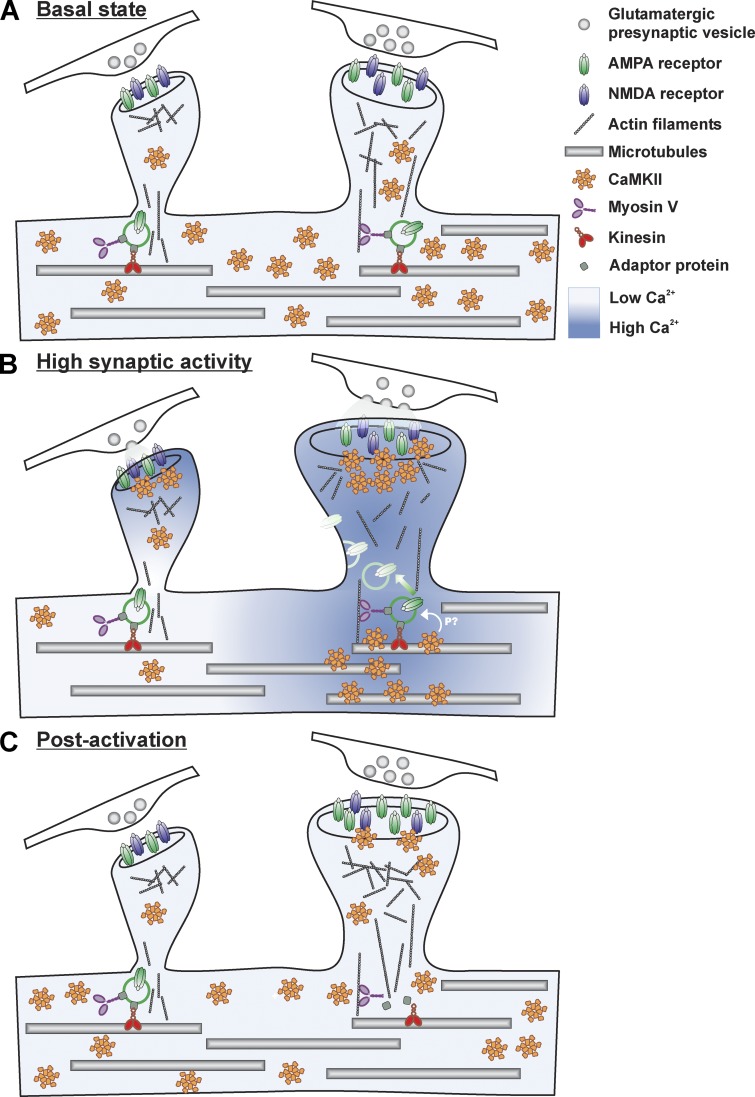Figure 9.
Model of CaMKII subdendritic translocation and its impact on synaptic plasticity. (A) During basal activity, intracellular free Ca2+ is low and a large fraction of CaMKII freely diffuses throughout the neuron. (B) During elevated synaptic activity, Ca2+ increases in spines and in nearby dendritic compartments. CaMKII translocates to activated synapses and subdendritic regions by binding to synaptic and microtubular partners, respectively. This local accumulation where Ca2+ activity is high leads to a depletion of the enzyme concentration on adjacent segments where Ca2+ activity is lower. The localized dendritic activation of CaMKII leads to a confined phosphorylation of substrates in this region. Hypothetically, CaMKII target may be proteins involved in receptor trafficking. Cargos containing AMPARs could then be released by CaMKII phosphorylation, thereby facilitating their delivery to activated synapses. (C) After activation, CaMKII largely unbinds from microtubules but only partially from strongly activated synapses, which remain larger and retain more AMPARs.

